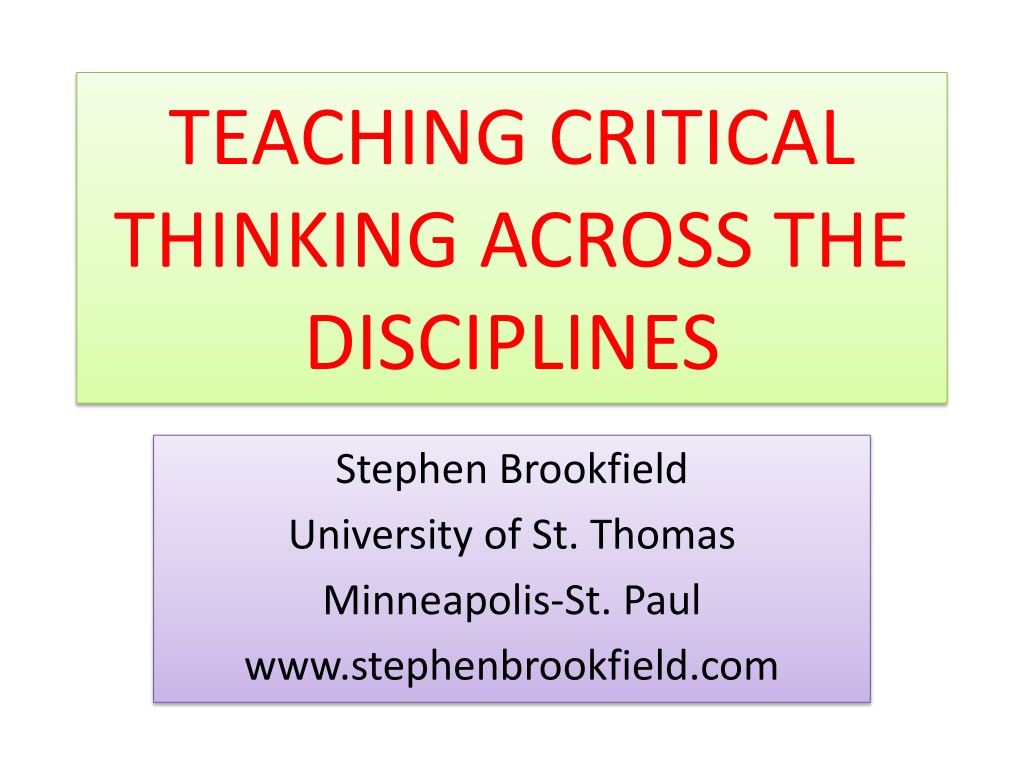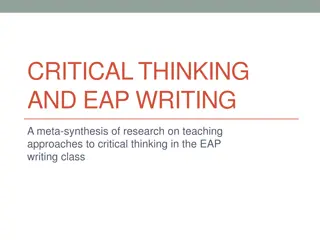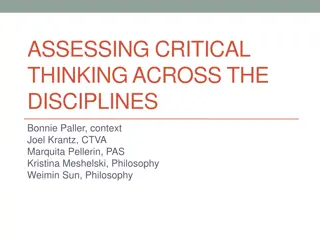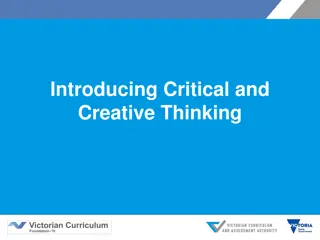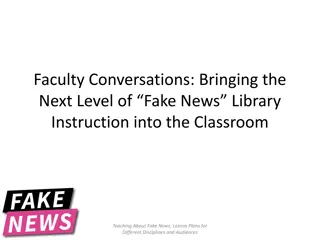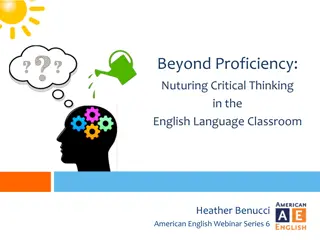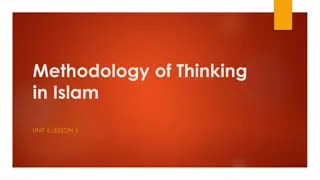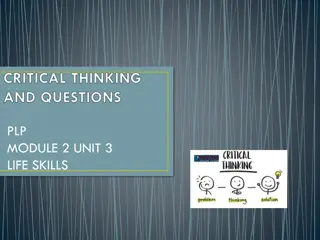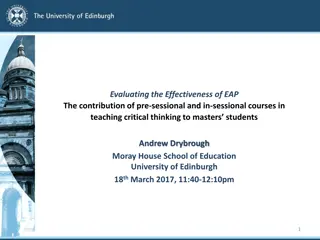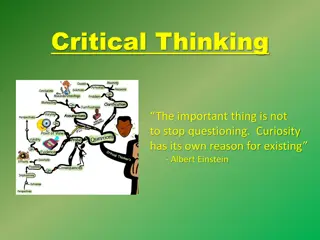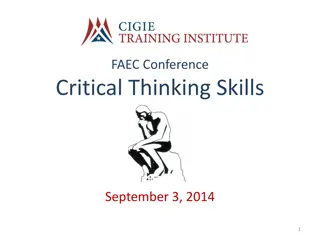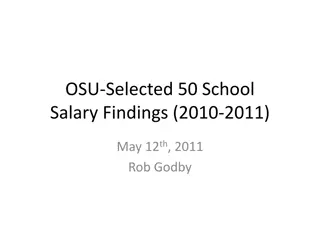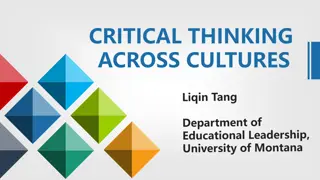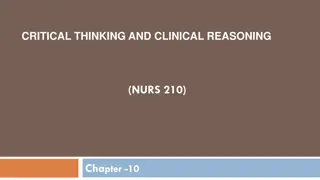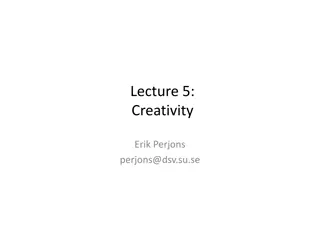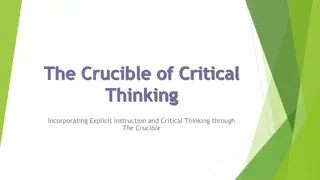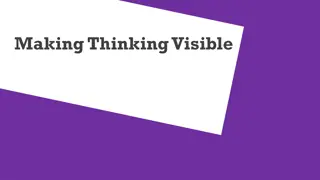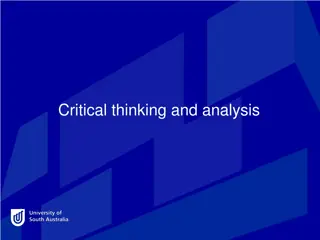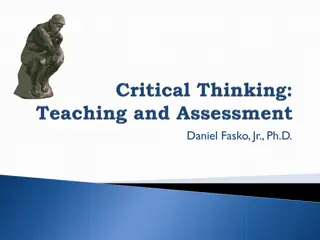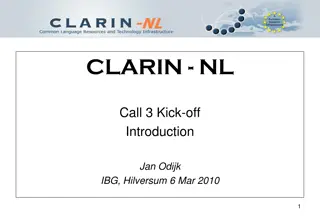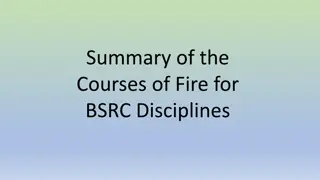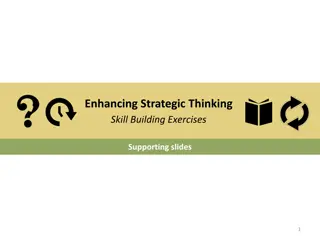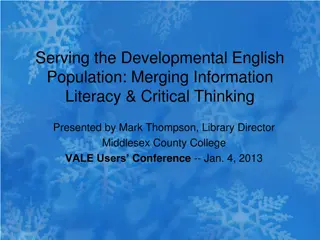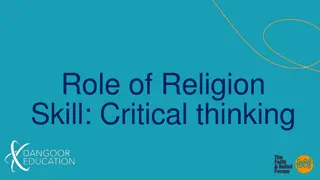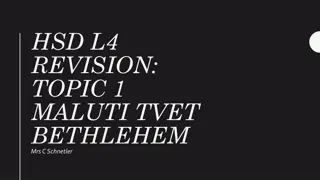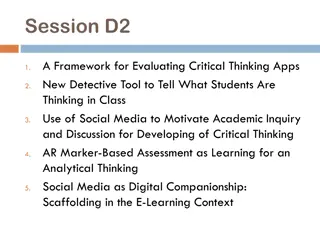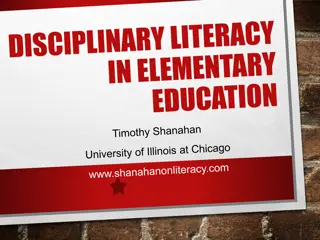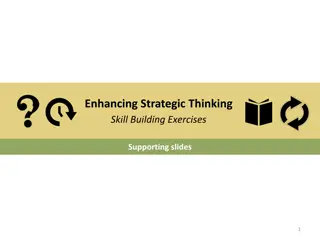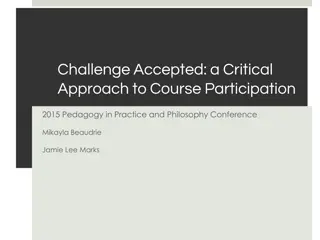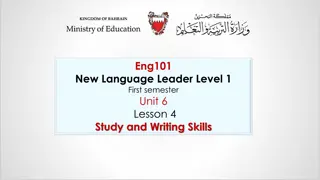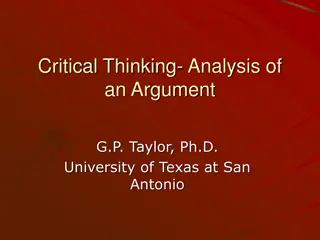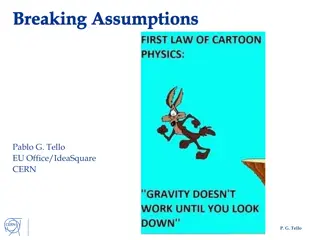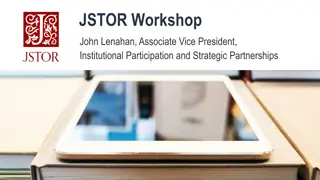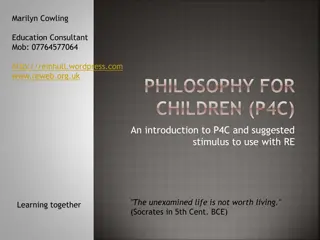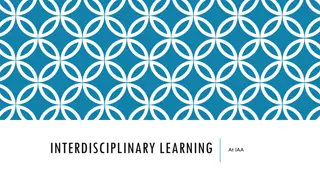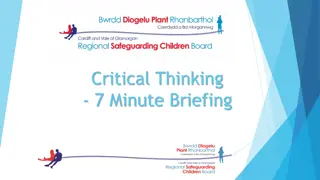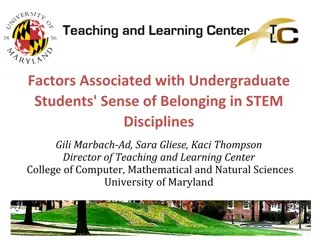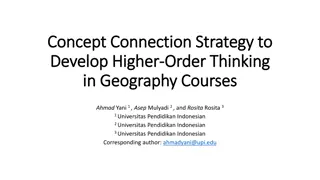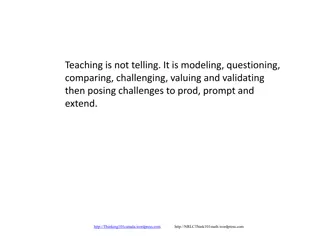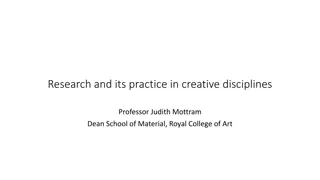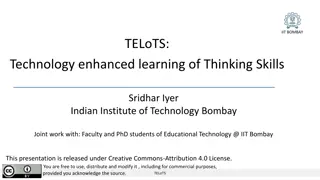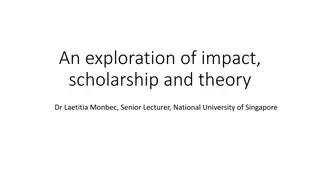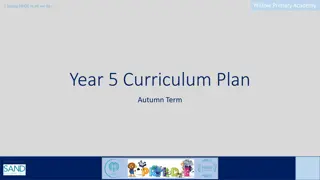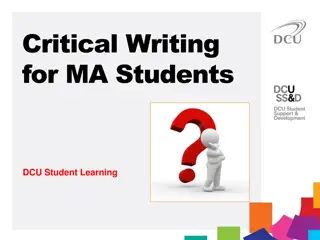Enhancing Critical Thinking: Strategies and Practices Across Disciplines
Explore the multifaceted dimensions of critical thinking in teaching and learning across various disciplines. Uncover the importance of identifying assumptions, the role of different traditions in promoting critical thought, and practical techniques like the Circle of Voices. Discover how critical thinking is learned and ways to foster it in students through modeling, questionnaires, and engaged discussions. Enhance your understanding of critical thinking and empower students to navigate complexities with informed action.
- Critical Thinking
- Teaching Strategies
- Disciplinary Practices
- Assumption Identification
- Learning Methods
Uploaded on Oct 06, 2024 | 0 Views
Download Presentation

Please find below an Image/Link to download the presentation.
The content on the website is provided AS IS for your information and personal use only. It may not be sold, licensed, or shared on other websites without obtaining consent from the author. Download presentation by click this link. If you encounter any issues during the download, it is possible that the publisher has removed the file from their server.
E N D
Presentation Transcript
TEACHING CRITICAL THINKING ACROSS THE DISCIPLINES Stephen Brookfield University of St. Thomas Minneapolis-St. Paul www.stephenbrookfield.com
Someone Who Thinks Critically Can Identify Assumptions Informing Thoughts & Actions Check Assumptions for Accuracy & Validity View Ideas & Actions from Alternative Perspectives Take Informed Action
ASSUMPTIONS CAUSAL - purport to explain a sequence of events PRESCRIPTIVE - assumptions about how things should happen PARADIGMATIC - framing, structuring assumptions viewed as obvious / taken for granted
TRADITIONS ANALYTIC PHILOSOPHY logical fallacies, argument analysis inductive, deductive, analogical, inferential NATURAL SCIENCE hypothetical-deductive method, principle of falsifiability CRITICAL THEORY uncovering power dynamics & ideological manipulation PRAGMATISM experimental pursuit of beautiful consequences (democracy)
CIRCLE OF VOICES Individuals reflect on the discussion topic (1-3 minutes) Participants go round the circle in order - each person has up to 1 minute of uninterrupted air time to give their viewpoint on the topic. No interruptions are allowed Move into free discussion with the ground rule that every comment offered must somehow refer back to a comment made by someone else in the opening circle of voices. This need NOT be agreement - it can be a disagreement, a question, an elaboration or extension, an illustration, and so on
QUESTION What most helps your students to think critically?
How is Critical Thinking Learned? What Students Say By Instructors MODELING, MODELING & MODELING via:- Critical Incident Questionnaire Assumption Inventories Ending Practicum, Lectures & Seminars with Questions, not Conclusions
Critical Incident Questionnaire (CIQ) MOMENT MOST ENGAGED AS LEARNER MOMENT MOST DISTANCED ACTION MOST HELPFUL ACTION MOST CONFUSING WHAT SURPRISED YOU MOST
HOW ADMINISTERED? Last 5 minutes of Class Anonymous Frequency Analysis of Main Themes Reported Out at Start of Next Class Negotiation NOT Capitulation
How Is It Learned? What Students say Instructor Point - Counterpoint / Structured Devil s Advocacy / Speaking in Tongues Best When Grounded in Real World Examples, Specific Experiences, Case Studies Incremental - Begin With Basic Mental Protocol /Inquiry Applied to Topics Well Away From Students Experiences then Gradually Move Closer to Home (c.f. Vigorous Exercise)
CHALK TALK Instructor writes a question in the middle of the board 5-10 minutes of silence is declared Students write responses to the question on the board whenever they feel ready Students & instructor draw lines between similar comments & add reactions
SNOWBALLING Instructor poses a question Students individually make notes & then share responses in pairs Pairs then join other pairs to share responses in quartets Quartets then join other quartets to share responses in octets & so on When groups merge they share only QUESTIONS or DIFFERENCES
QUESTION When Critical Thinking Happens in Your Class, What Does It LOOK LIKE SOUND LIKE FEEL LIKE
CIRCULAR RESPONSE Groups of 8-12 Go round the circle: each person has up to a minute to talk - NO INTERRUPTIONS What you say must respond to the previous speaker s comments (can be a disagreement or expression of confusion) Once all have spoken move into open conversation with no ground rules
Question HOW DO YOU MODEL CRITICAL THINKING FOR YOUR STUDENTS?
RESOURCES Teaching for Critical Thinking (2011) The Skillful Teacher (2006 2nd. Ed.) Discussion as a Way of Teaching (2005 2ndEd.) with Stephen Preskill All published by Jossey-Bass/Wiley www.stephenbrookfield.com
